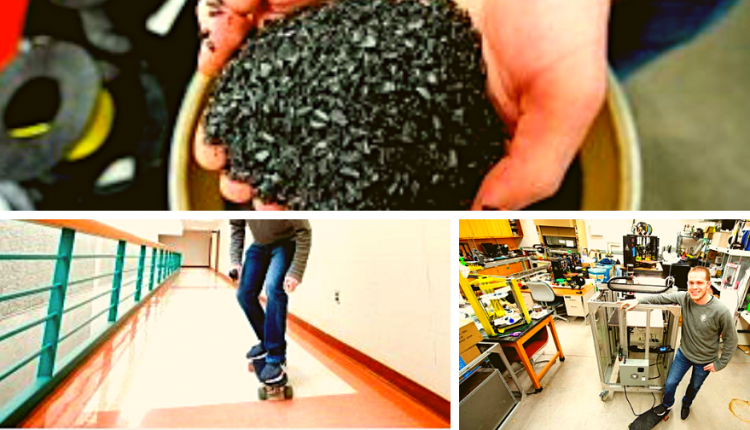How 3D Printing is Making its Way Into Outdoor Sporting Goods
By Ruth Seeley
Sporting goods present unique challenges for 3D printers due to their size, durability, and specialized nature. But a team of Michigan Technical University engineers and re:3D Inc. have been using an open source industrial fused particle fabrication (FPF) or fused granular fabrication (FGF) 3D printer that skips the filament-making step of and saves on one the five melt cycles that can occur before structural integrity is adversely affected. Basically, it prints directly from shredded waste.
The Gigabot X’s size and versatility means plastic waste particles can be reformed into “Upper Peninsula-inspired” items including kayak paddles, snowshoes, and skateboards.
“This isn’t a gadget to make toys for your kids; this is an industrial machine meant to make real, large, high-performance products,” said Joshua Pearce, a professor in Michigan Tech’s Department of Electrical and Computer Engineering. “Of course, for our testing, we wanted to use recycled plastic.”
The team lays out how fab labs and other 3D printing hubs like makerspaces, public libraries or schools can economically sustain themselves while printing environmentally friendly products using FPF. Return on investment for a Gigabot X reached above 1,000% for high-capacity use paired with recyclable feedstock.
Pearce and his team compared costs of low-end and high-end options for commercially available products, prints with commercial filament, prints with commercial pellets and prints with recycled plastic. They ran these against four capacity scenarios: continuous printing, one new start per day, two new starts per day and printing once per week. The printed kayak paddle, which was the trickiest to produce and compare because of the metal pipe, was financially comparable to the least expensive off-the-shelf paddle. Skateboards and snowshoes were both easy to produce and significantly lower in cost than commercial products. FPF printing beat the economics of even the cheapest decks using commercial pellets and dropped in cost using waste plastic. Over their lifetime, if operated even only once a day, the Gigabot X could produce millions of dollars of sporting goods products.
Story via Michigan Technological University

